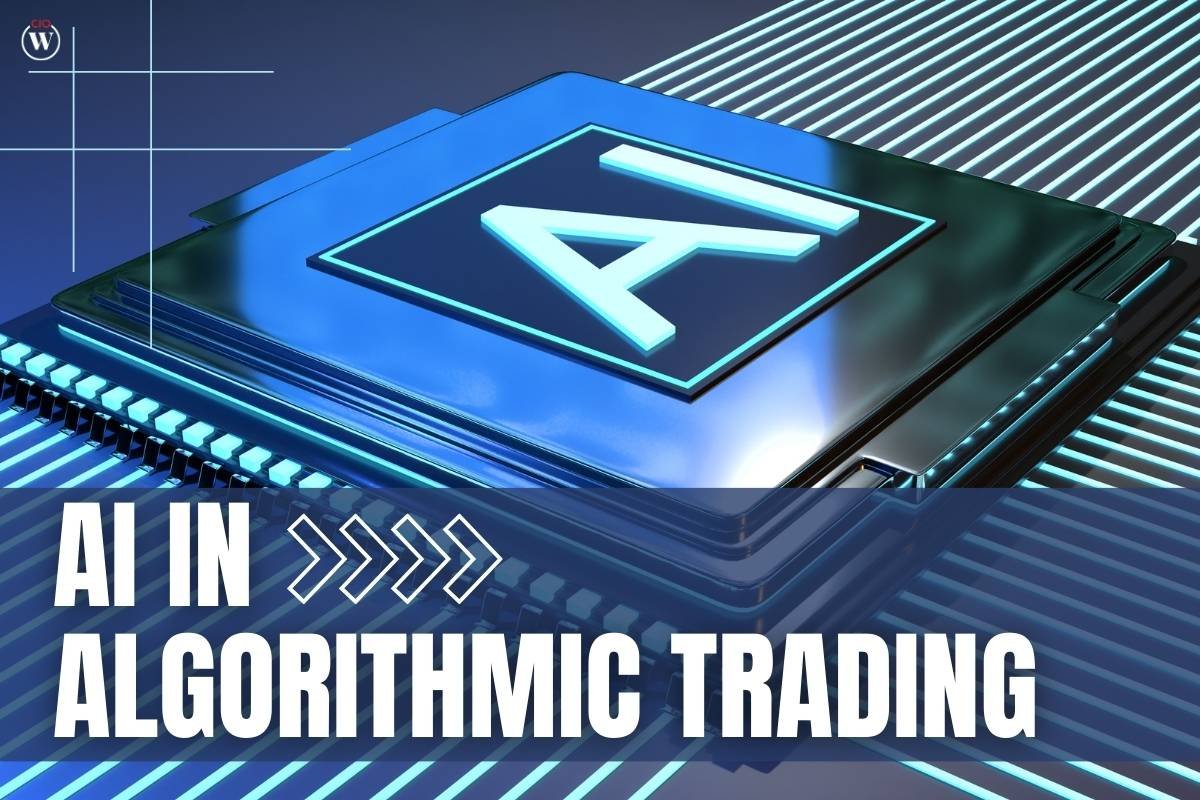Algorithmic trading, a powerful force in modern financial markets, has been fundamentally transformed by the integration of artificial intelligence (AI) technologies. This comprehensive analysis delves into the fascinating evolution and the profound impact of AI on algorithmic trading. From the basic principles of algorithmic trading to the intricate ways AI in Algorithmic Trading is shaping the landscape, we will explore the implications, benefits, and challenges that arise from this dynamic fusion.
Understanding Algorithmic Trading
Algorithmic trading, often referred to as algo trading, is the practice of executing financial transactions using pre-defined computer programs. These algorithms are designed to follow specific trading strategies, taking into account a variety of variables, such as price, volume, and time. The primary objective of algorithmic trading is to optimize trading processes and achieve the best possible results with minimal human intervention. It’s the marriage of technology and finance, and it’s been a game-changer in the world of financial markets.
The core advantages of algorithmic trading include speed, precision, and consistency. Speed is of the essence in today’s fast-paced markets, and algorithms can execute trades in a matter of milliseconds, far faster than any human trader. Precision is achieved through strict adherence to predefined rules, minimizing the impact of emotions or human errors. Consistency, too, is crucial. Algorithms don’t suffer from fatigue or emotional swings, ensuring that a trading strategy is executed consistently over time.
However, traditional algorithmic trading systems had limitations. They relied on fixed sets of rules, which could become outdated in rapidly changing markets. This is where AI comes into play.
The Advent of AI in Algorithmic Trading
AI, encompassing technologies like machine learning and deep learning, brought a new level of adaptability and sophistication to algorithmic trading. Machine learning algorithms, for instance, can analyze vast amounts of historical data and adapt their strategies accordingly. They can recognize patterns and trends that may be beyond the scope of human traders or traditional algorithms.

One of the most significant AI advancements in algorithmic trading is the ability to handle unstructured data. Financial markets are influenced by a wide array of sources, from news articles and social media sentiment to global events. AI can process this data, providing valuable insights that shape trading decisions. Sentiment analysis, for example, uses natural language processing to gauge public sentiment and can provide early indicators of market shifts.
Implications of AI in Algorithmic Trading
- Improved Prediction and Forecasting:
AI-powered algorithmic trading systems are equipped to make more accurate predictions about market movements. This enhanced predictive power can translate to better decision-making and, ultimately, more profitable trades.
- Risk Management:
AI can also be employed for risk management. It can assess risk factors in real time, allowing traders to adjust their positions to mitigate potential losses.
- Market Liquidity:
Algorithmic trading with AI can contribute to market liquidity, as it can respond swiftly to buy and sell orders. This liquidity can benefit not only the traders but the market as a whole.

- Reduced Human Error:
By minimizing human involvement, AI reduces the likelihood of costly errors and emotional decision-making. This is especially important in high-frequency trading, where split-second decisions can have substantial consequences.
- Increased Efficiency:
AI can operate 24/7 without fatigue, making trading more efficient and less reliant on human schedules. This extends the trading window and can seize opportunities in global markets.
Benefits of AI in Algorithmic Trading
- Enhanced Accuracy:
AI algorithms are adept at analyzing data, recognizing patterns, and making data-driven decisions. This leads to higher precision in trading strategies.
- Speed and Scalability:
AI can process vast amounts of data and execute trades at lightning speed. This is crucial in markets where time is of the essence.
- Adaptability:
Machine learning allows algorithms to learn from past data and adapt to changing market conditions. This flexibility is essential for thriving in dynamic markets.
- Risk Management:
AI can continuously assess and manage risk, helping to protect capital and reduce losses.
- Reduced Costs:
Automated trading can cut down on labor costs associated with human traders. AI-powered systems require less human intervention, saving on personnel expenses.
Challenges and Concerns
While the integration of AI in algorithmic trading offers numerous advantages, it also presents its own set of challenges and concerns.
- Data Quality and Bias:
AI systems heavily depend on data quality. Biased or incomplete data can lead to skewed results, and AI systems may perpetuate biases present in the data.
- Over-Reliance on Technology:
Relying solely on AI can be risky. Markets can experience unforeseen events or anomalies that algorithms may not be equipped to handle.

- Regulatory Scrutiny:
AI in financial markets faces increasing regulatory scrutiny. Regulators are concerned about market manipulation, insider trading, and fairness.
- Complexity:
AI algorithms can be highly complex, making it challenging for traders to understand their inner workings. This can lead to a lack of transparency in decision-making.
- Cybersecurity:
With algorithms handling a significant portion of trading, the vulnerability to cyberattacks increases. Protecting algorithmic systems from breaches is a growing concern.
Frequently Asked Questions (FAQs)
1. What is the difference between algorithmic trading and high-frequency trading?
Algorithmic trading is a broad term that encompasses various strategies relying on pre-defined rules and automated execution. High-frequency trading (HFT) is a subset of algorithmic trading characterized by extremely high trading volumes and low latency. HFT strategies aim to profit from small price discrepancies and require ultra-fast execution.
2. How does AI improve risk management in algorithmic trading?
AI can continuously monitor market conditions and assess risk factors in real time. It can set risk thresholds and automatically adjust trading strategies or halt trading to mitigate potential losses. This proactive risk management is a significant benefit of AI in algorithmic trading.
3. Can AI-powered algorithmic trading systems operate without human intervention?
While AI-powered systems can operate with minimal human intervention, they still require oversight and monitoring. Human traders play a crucial role in defining the system’s parameters, monitoring performance, and ensuring compliance with regulations.
4. Is algorithmic trading only for institutional investors, or can individual traders utilize it?
Both institutional investors and individual traders can utilize algorithmic trading. In recent years, the accessibility of algorithmic trading tools and platforms has increased, allowing retail traders to create and implement their own algorithmic strategies.
5. How does AI handle market sentiment analysis in algorithmic trading?
AI uses natural language processing and sentiment analysis techniques to process vast amounts of unstructured data, such as news articles, social media sentiment, and public opinions. It can gauge the overall sentiment and incorporate this information into trading decisions, helping traders react to changing market sentiment.
Conclusion
The impact of AI on algorithmic trading is profound and far-reaching. The synergy between AI and algorithmic trading has ushered in an era of increased accuracy, efficiency, and adaptability in financial markets. It has transformed the way trades are executed, with algorithms analyzing vast datasets and adapting to market dynamics.
However, this technological evolution is not without its challenges, including data quality, regulatory scrutiny, and concerns about transparency. As the financial industry continues to embrace AI, the future of algorithmic trading is likely to be shaped by these powerful technologies, with a focus on addressing these challenges while maximizing the benefits.









